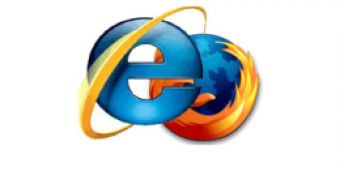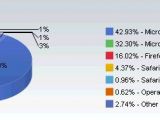Out with the old, in with the new. Internet Explorer 7 and Firefox 2.0 are virtually slaughtering Internet Explorer 6. There was a time, unfortunately not too long ago, when Internet Explorer 7 ruled the world wide web. Back in October 2006, IE6 still accounted for approximately 80% of the global browser market. October 2006 was a turning point as both Microsoft and Mozilla released new versions of their respective browsers, namely Internet Explorer 7 and Firefox 2.0.
According to statistics made available by Net Applications, in October 2006, IE6 had the lion's share of the browser market with 77.22%. Internet Explorer 7 had climbed to 3.18%, while Firefox 2.0 was at 0.69%. At over a year since the availability of Firefox 2.0 has all but consumed the users of Firefox 1.5, a browser that is being run now by only 0.53% of Mozilla users. Of course, the fact that Mozilla had severed the lifeline of Firefox 1.5, cutting support on May 30, 2007, only helped to boost the adoption of version 2.0.
By contrast, Microsoft is still offering support for both IE7 and IE6 and, in this regard, the latest version of the company's proprietary browser has had serious trouble dislodging its predecessor from the market, even if Internet Explorer 6 is a dangerously inferior product from all aspects. Almost immediately after the release of IE7, Microsoft also began serving the browser as an Automatic Update to all Windows XP SP2 users running IE6. This helped little with the speeding up of IE7's adoption.
Mozilla did the same thing for Firefox 1.5 users, forcing upgrades to Firefox 2.0, but with a little more success than Microsoft. At over a year since the release, IE7 has barely surpassed IE6 in terms of audience with a market share of 42.93%, compared to just 32.30%. The Redmond company is also getting ready to deliver IE7 as an update for business customers via WSUS, starting on February 12, 2008.
And the fact of the matter is that both IE7 and Firefox 2.0 are eroding market share from under IE6, converting users at an increasing pace. Still, with the prologued support of IE6, it's bound that some users will hold on to the obsolete browser even after IE8 will hit at the end of this year.

 14 DAY TRIAL //
14 DAY TRIAL // 
